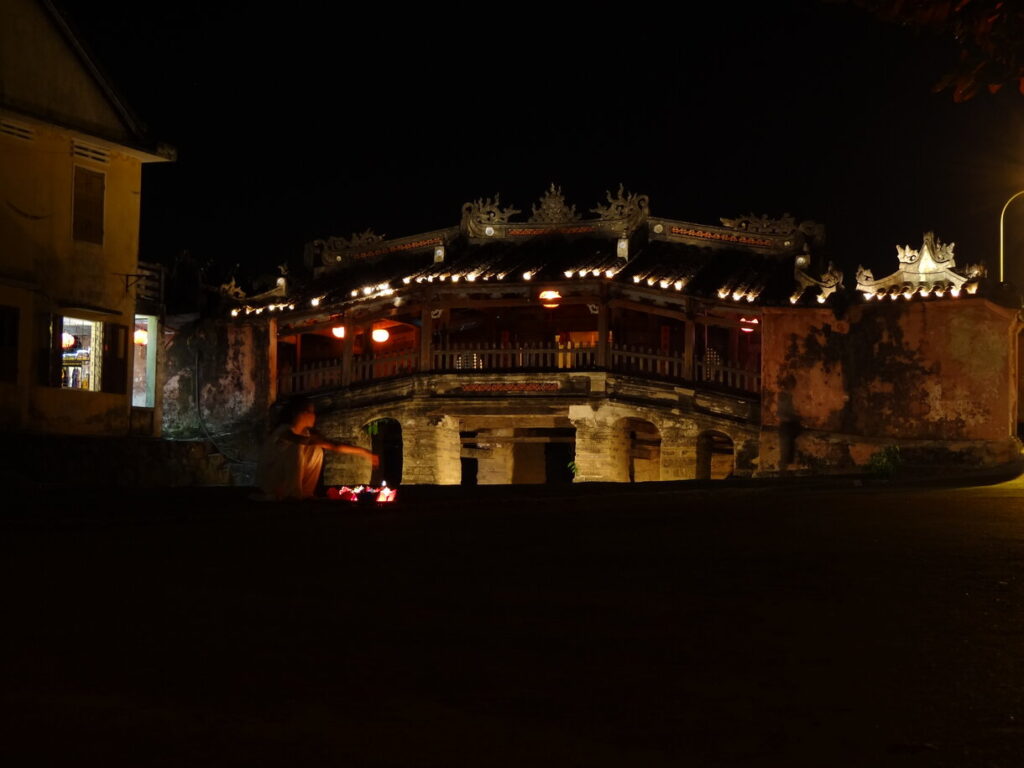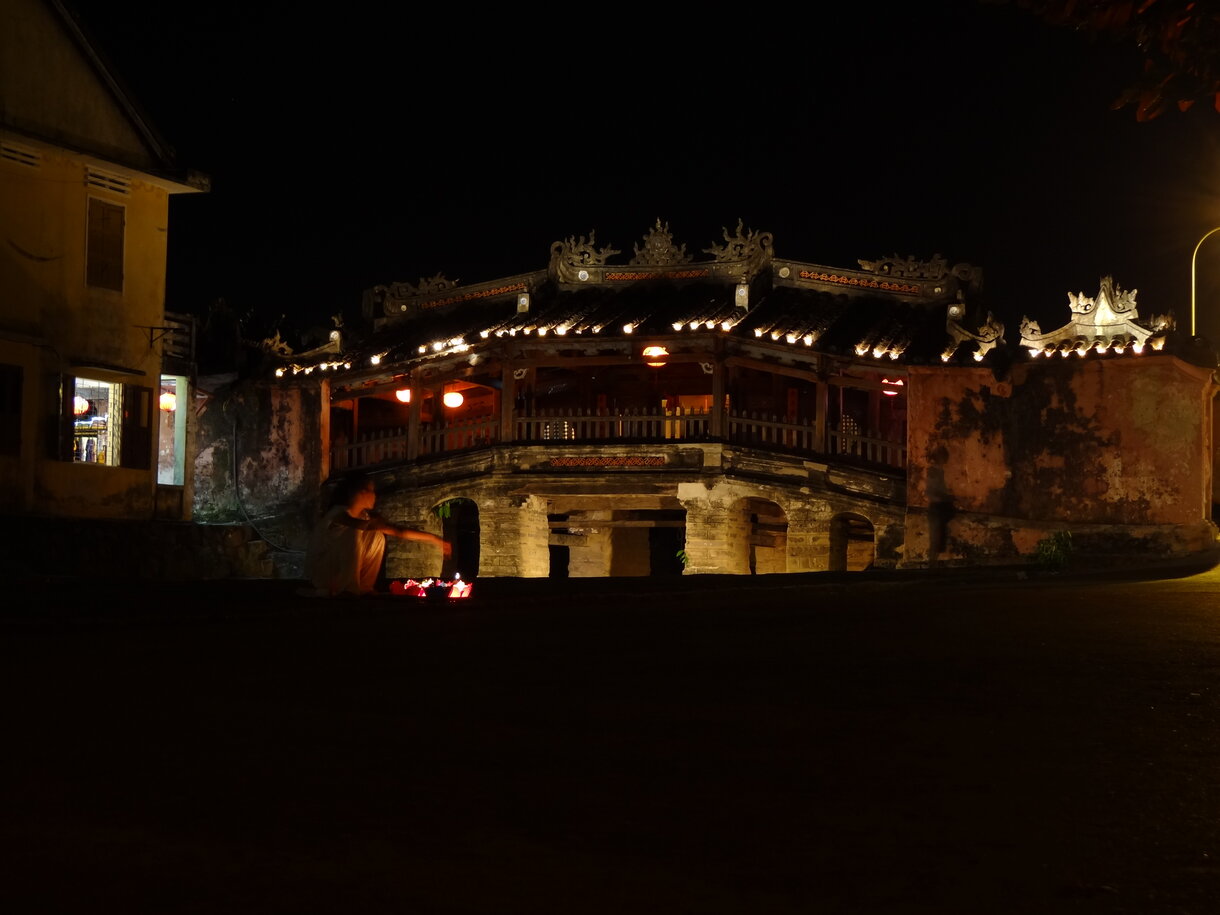Hoi An – The Pearl of Ancient Architecture and Trading Culture
Hoi An, inscribed as a UNESCO World Heritage Site in 1999, is one of the best-preserved trading towns in Southeast Asia. Between the 16th and 18th centuries, it was a vibrant port where merchants from China, Japan, and Europe converged.
Unexpected Hospitality
During my trip to Hoi An, I experienced remarkable hospitality. A fellow bus passenger offered me accommodation for just $7 in her family home. It turned out to be a wonderful cultural experience. The hosts prepared a genuine feast—fish, chicken, seafood, salads, and even local beers and wines. Two hours of shared dining flew by as we talked about cultural differences between Asia and Europe.

The Japanese Covered Bridge – The City’s Icon
The most recognizable landmark in Hoi An is the 16th-century covered wooden bridge, built by Japanese merchants. This unique structure once connected the Japanese quarter with the Chinese quarter. Interestingly, inside the bridge is a small temple dedicated to the weather deity believed to protect the town from earthquakes.
Chinese Heritage
Hoi An is a true treasure trove of Chinese architecture. The town hosts five “assembly halls,” which served as meeting and worship places for Chinese communities from different regions. The most beautiful are Phuc Kien (Fujian) and Cantonese halls. Also worth visiting are the residences of wealthy merchants, such as the Tan Ky House, known for its intricately carved wooden details.

Lantern Festival Magic
Every evening, Hoi An transforms into a magical city of lanterns. The tradition of lighting colorful lanterns dates back to when merchants illuminated their homes and shops. Today, tourists can release small lanterns onto the Thu Bon River, believed to bring good luck. On every full moon night, the city hosts the Lantern Festival, during which all electric lights in the old town are switched off, creating an enchanting atmosphere.

Leave a Reply